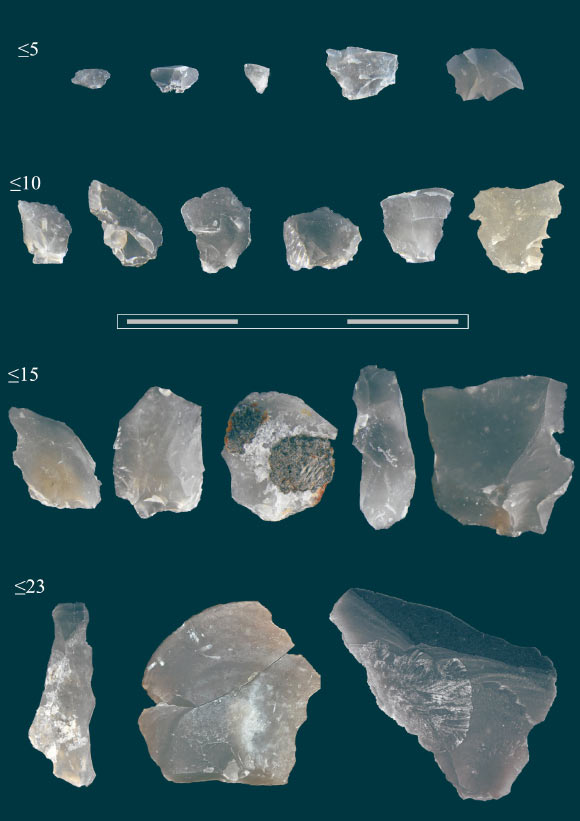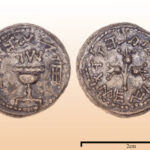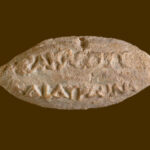Scientists at the University of Tübingen have performed a careful and in-depth analysis of tiny resharpening flakes from the famous Middle Pleistocene site of Schöningen in Lower Saxony, Germany.
The flint chips from Schöningen, Germany, which were created as ‘waste’ during the re-sharpening of knife-like tools; they are sorted by size in millimeters. Scale bar – 3 cm. Image credit: Flavia Venditti.
In the 2010s, archaeologists unearthed the 300,000-year-old skeleton of an extinct Eurasian straight-tusked elephant (Palaeoloxodon antiquus) at Schöningen.
The site is also known for the discovery of wooden spears, the butchered remains of horses and other large mammals, and the remains of saber-toothed cats (Homotherium latidens).
“We can prove, among other things, from the new finds that people — probably Homo heidelbergensis or early Neanderthals — were in the vicinity of the elephant carcass,” said Dr. Jordi Serangeli, a researcher in the Senckenberg Centre for Human Evolution and Palaeoenvironment at the University of Tübingen.
“This site is located about 2 m below the famous site of the world’s oldest spears.”

Homo heidelbergensis working wood with the help of a scraping tool, that was later re-sharpened on the spot of the elephant 300,000 years ago in what is now Schöningen, Germany. Image credit: Benoît Clarys.
In their study, Dr. Serangeli and colleagues examined 57 small stone chips and three bone implements for re-sharpening stone tools found in close association with the straight-tusked elephant skeleton.
“The story of the Stone Age is told mainly via the study of objects worked by our ancestors,” said Dr. Flavia Venditti, a researcher in the Department of Early Prehistory and Quaternary Ecology at the University of Tübingen.
“One is inclined to believe that large tools such as knives, scrapers and points are more significant than simple flakes, especially when they are small and really just a byproduct of tool production.”
“But even microscopic stone chips, in the context of the overall evidence, can tell us a lot about the way of life of our ancestors. Most of the fragments studied were smaller than 1 cm.”
“Through a multidisciplinary approach that included technological and spatial analysis, the study of residues and signs of use, and methods of experimental archaeology, we were able to obtain more of the Stone Age story from these stone chips.”
“The small flakes come from knife-like tools, they were knocked off during re-sharpening. The chips fell to the ground, where they stayed when the people moved on with their tools.”

Reconstruction of the Schöningen lakeshore as the humans discovered the carcass of the straight-tusked elephant. Image credit: Benoit Clarys.
According to the team, 15 pieces had signs of use typical of working fresh wood.
“Microscopic wood residues remained attached to what had been the tool edges,” Dr. Venditti said.
“In addition, micro use-wear on a sharp-edged natural flint fragment proved that people used it to cut fresh animal tissue.”
“Probably this flint was used in the butchering of the elephant.”
“These results are further evidence of the combined use of stone, bone, and plant technologies 300,000 years ago, as has been documented several times in Schöningen.”
“This study shows how detailed analyses of traces of use and micro-residues can provide information from small artifacts that are often ignored,” said University of Tübingen’s Professor Nicholas Conard.
“This is the first study to produce such comprehensive results from 300,000-year-old re-sharpening flakes.”
“The prerequisite for this kind of research is that the artifacts are handled with extreme care from excavation throughout the analyses.”
The findings appear today in the journal Scientific Reports.
_____
F. Venditti et al. 2022. Using microartifacts to infer Middle Pleistocene lifeways at Schöningen, Germany. Sci Rep 12, 21148; doi: 10.1038/s41598-022-24769-3




